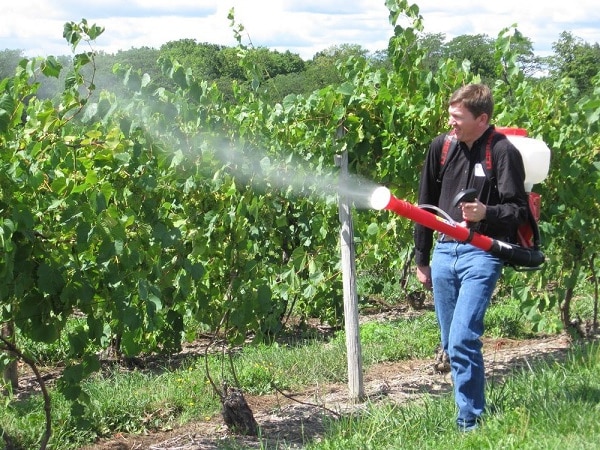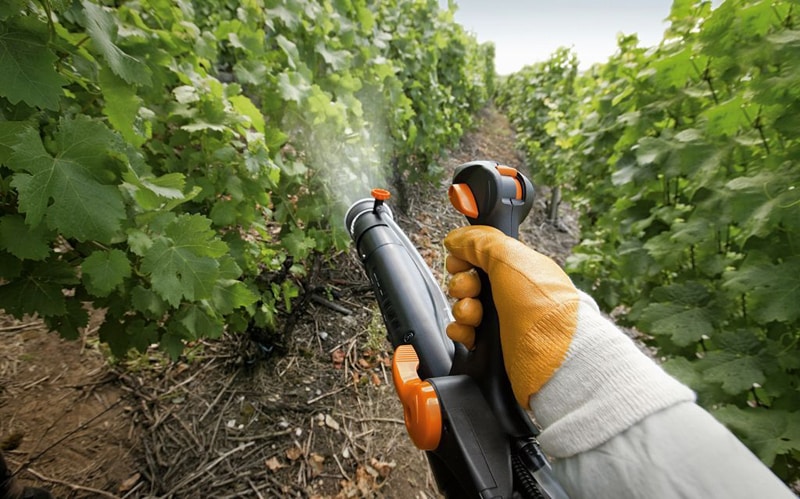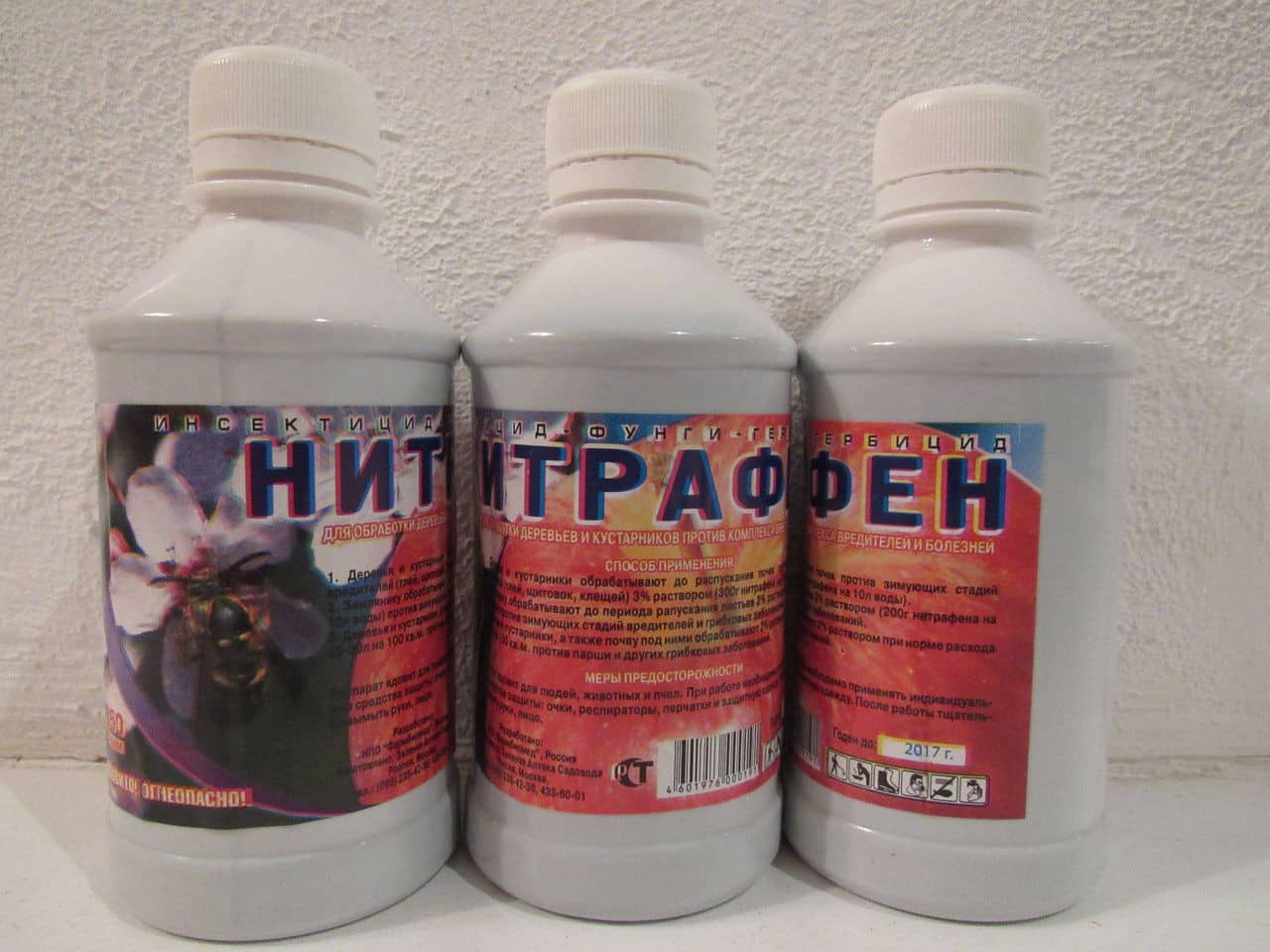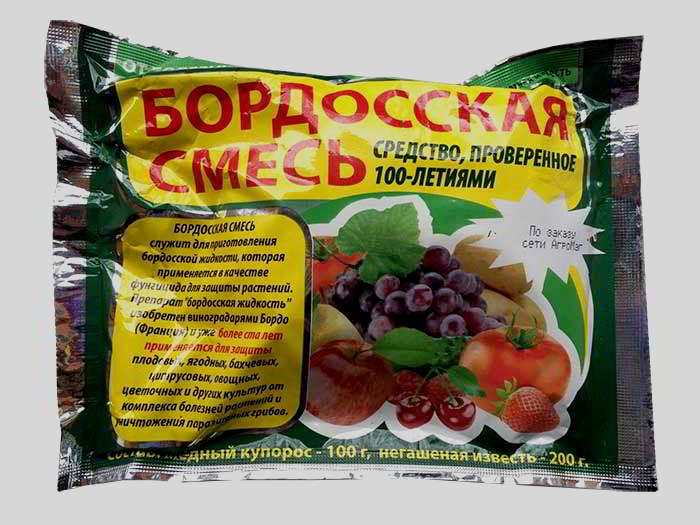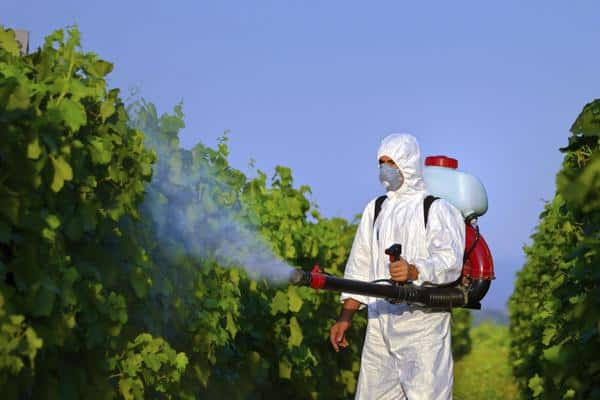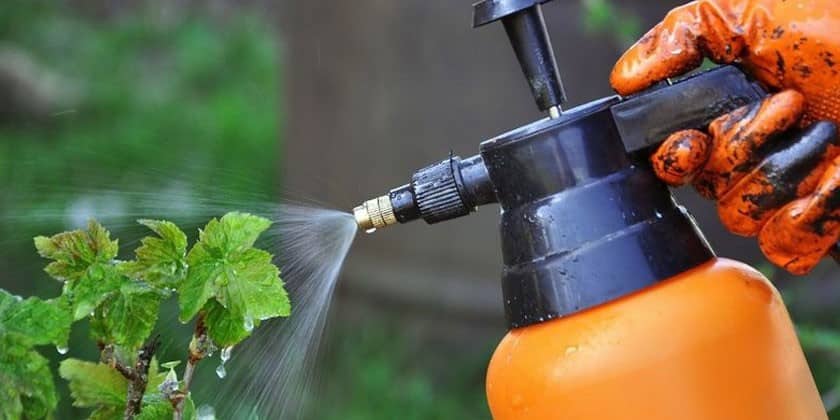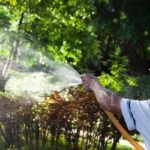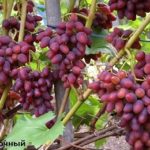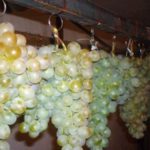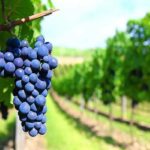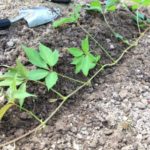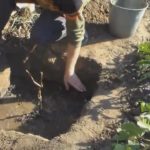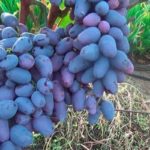Grapes are a noble, tasty, dietary and healing berry, originally from time immemorial. The advantage of grapes is the production of various types of wines and strong alcoholic drinks, for which they serve as raw materials. The main goal of gardeners is to grow a rich harvest, which cannot be done without treating the grapevine from pests and diseases throughout the summer, especially in July, during the formation of the future harvest.
Do grapes need to be processed?
Despite the fact that grapes are a heat-loving plant, there are many varieties zoned in the Middle Zone and even in the northern regions of the country. To obtain a stable, large harvest, you need a competent approach to agricultural technology and methods of cultivating crops, carrying out preventive measures against pests and diseases, and in the case of diseases, knowledge of measures to combat plant diseases and pests.
Spraying vineyards with chemicals is the main way to prevent and combat diseases, guaranteeing the cultivation and harvest of a rich harvest.
When to treat?
The grapes are processed several times during the season. For modern grape varieties, it is enough to process them no more than 4 times, which will provide complete protection from pests and plant diseases. Summer treatments ensure the preservation of the crop without loss. Summer treatment must be carried out during the rainy season, after precipitation, within 2 hours.
During the summer rains, pathogenic spores are lifted by the wind and carried through the air, and settle with the rain on the leaves of plants, so it is necessary to kill them before they penetrate the plant cells.
Autumn measures for the prevention and disinfection of grapes make it possible to ensure the health of the plants before wintering. Spring sprays will help ensure healthy vine growth.
When the harvest ripens, when the berries enter the stage of filling with juice and acquiring sugars, stop all work that involves the use of toxic chemicals. In cases of emergency, you can resort to folk remedies using baking soda, colloidal sulfur, ash solutions or laundry soap, and potassium permanganate.Before and after flowering, preventative spraying with fungicides is mandatory.
Timely implementation of disinfection measures creates conditions for obtaining a rich harvest of sweet grapes.
To navigate the timing of disinfection work, you can use a calendar that details the timing, activities, preparations and treatment methods. You can find the calendar on the Internet or use the one shown in our table.
Table
Carrying out treatment of grape bushes from diseases and pests.
| Time of year, months | Condition of the vine | Treatment against diseases and pests | Processing agents | Solution concentrations |
| April
t > + 5 0WITH |
State of dormant kidneys | Vine eradication treatment, | inkstone | 3% solution |
| treatment for fungal diseases,
pests |
Nitrafen | 2% solution | ||
| DNOC | 1% solution | |||
| May | The appearance of the first leaves, before flowering | Diseases: mildew, oidium, anthracnose, black spot (if it was not present in the previous year, then treatment is not carried out). | Fungicides | According to instructions |
| pests | acaricides | according to instructions | ||
| June:
2 times
|
1. Before flowering
2. When the berries are the size of a pea |
Diseases,
pests |
Fungicides | According to instructions |
| Pesticides are a no-no!
Death of pollinators and flowers |
||||
| July
1-15 3 weeks after previous treatment
15-31 |
Stems growth phase and berry filling
Collection of early varieties |
fungal diseases: - oidium in dry weather
- oidium in rainy weather - mildew, - gray rot
-pliers -wasps |
Flint B
Quadris Profit Gold Topaz potassium permanganate Tiovit Jet Traps |
according to instructions
7 grams per 10 liters of water According to instructions
|
| August | Berry growth and ripening phase | fungal diseases: - oidium,
- mildew, - gray rot
|
Quadris
Potassium permanganate |
According to instructions
7 grams per 10 liters of water |
| September | Maturation phase
If the harvest is harvested |
Same as in August
Fungal diseases |
—//—
Flint Strobe |
—//—
According to instructions
|
| October - if there were illnesses in the current year | State of rest | Eradication treatment | inkstone | 3% solution |
What is the best way to spray grapes against pests?
Fungicides are drugs related to chemical compounds or biological origin, which include microorganisms (fungi or bacteria); they are used to combat plant diseases that cause pathogenic spores of fungi and microorganisms.
Fungicides are divided into systemic and contact preparations:
- systemic fungicides penetrate into plant cells and kill fungal spores inside the plant; rain does not weaken the effectiveness of the drugs;
- contact fungicides work on the principle of surface action, they cover plants with a protective film, preventing pathogenic spores from entering and introducing into the plant, they are washed off with water;
- biofungicides contain fungal spores or strains of microorganisms that are stronger than pathogenic microflora;
- combined fungicides have systemic and contact properties, their advantages: they can be used for diseases and for protection against pests.
For pests, drugs are used - acaricides (literally: drugs that kill ticks): Mitak, Neoron, Talstar, Aktellik, Faxtak, Mitak, colloidal sulfur. Iron sulfate is a universal solution that rids the plant of diseases and pests.
In addition to direct harm to leaves, shoots, berries, insects spread pathogenic strains and spores of fungi. Insects cause double harm to plants. The combined fungicide Nitrafen will help in the fight against both diseases and pests.The choice of insect repellents must be approached selectively.
Means for treating grapes against diseases
To treat grapes against diseases, there is a wide range of drugs - fungicides:
- systemic fungicides: Topaz, Strobi, Horus, Quadris;
- contact fungicides: Kuprolux, Hom, Sedakol, Bordeaux mixture, Aniga-Peak;
- combined fungicides: Nitrafen, Sodium polysulfide, Delan, Kuproxat, Penncozeb;
- biofungicides: Mikosan-B, Trichodermin, Pentafag-S, Planriz.
These are highly effective drugs against diseases caused by spores and strains of pathogenic microorganisms on plants. Universal and oldest drugs for grape diseases: Bordeaux mixture and iron sulfate.
With the help of fungicides, pathogens of plant diseases are destroyed, but it is impossible to cure diseased leaves and shoots. Damaged parts of plants must be removed.
How to properly process grapes?
To effectively use insecticides and fungicides, you need to know not only their properties, but also the rules for spraying:
- in the evening, after sunset, as the sun's rays, refracted through drops of water, burn the leaves;
- in calm weather, otherwise the preparations are carried by the wind and quickly evaporate, reducing the effect of treatment;
- from the top of the bush downwards, capturing the stem and root parts;
- spraying after rain - within 2 hours after the end of the rain (but the moisture from the leaves must evaporate before treatment);
- When processing, use protective clothing, rubber gloves, and safety glasses.
How to properly organize protection against pathogenic microflora and harmful organisms? Keeping personal records of observations of the behavior of grapes in various weather conditions and the occurrence of diseases, measures to combat them.All this can be reflected in the form of diagrams that will help in the future to carry out preventive work and pest and disease control in a timely and effective manner.
Ready-made grape processing schemes can be found on various websites on the Internet. On the Internet you can find a “Scheme for treating grape bushes against diseases, from Syngeta. Grapes 2017". This diagram reflects a detailed schedule of grape processing work. Syngenta is the largest company in Switzerland that produces seeds and plant protection products against diseases and pests.
Disinfection of planting material
After purchasing seedlings or grape cuttings, the planting material is disinfected, which will save you from subsequent hassle in combating diseases.
To disinfect pipes, use: ethyl alcohol - 70% solution, bleach solution (1/2 cup per 1 liter of water), 3% hydrogen peroxide solution, pesticide solution (60 grams of karbofos per 8 liters of water). Before planting, the cuttings are dipped in disinfectant solutions for 5 minutes, washed with water, and the sections are renewed. The seedlings will not withstand such a procedure due to their delicate root system. They are cleaned of soil, dipped in a clay mash (prepared with a solution of karbofos) or in an aqueous solution of karbofos for a few seconds, placed in a plastic bag for a day, and planted in the ground. The condition of the seedlings is at rest (without swollen buds).
Preventative treatment
Timely preventive work in garden plots and vineyards is the key to a rich harvest.
To prevent infection, there is a set of measures, the implementation of which eliminates the spread of diseases and pests:
- choosing a planting site for the crop in a high and ventilated area;
- watering grapes at the root;
- forming a bush, pruning dried shoots;
- weeding and removing fallen leaves;
- proper fertilizer;
- mulching with pine needles;
- preventive treatment with fungicides and acaricides.
Preventive spraying is carried out regardless of the presence of pests and diseases:
- before flowering - Ridomol Gold (mildew) and Topaz (oidium);
- after flowering - Quadris or Strobi (antifungal drugs); for gray rot - Switch or Cantus;
- against pests, special-purpose preparations are chosen.
By the end of July, all treatments with pesticides and pesticides are stopped, as this leads to the accumulation of toxic substances in the berries. The combination of therapeutic and preventive treatments is the key to preventing the development of the disease and destroying pests.

